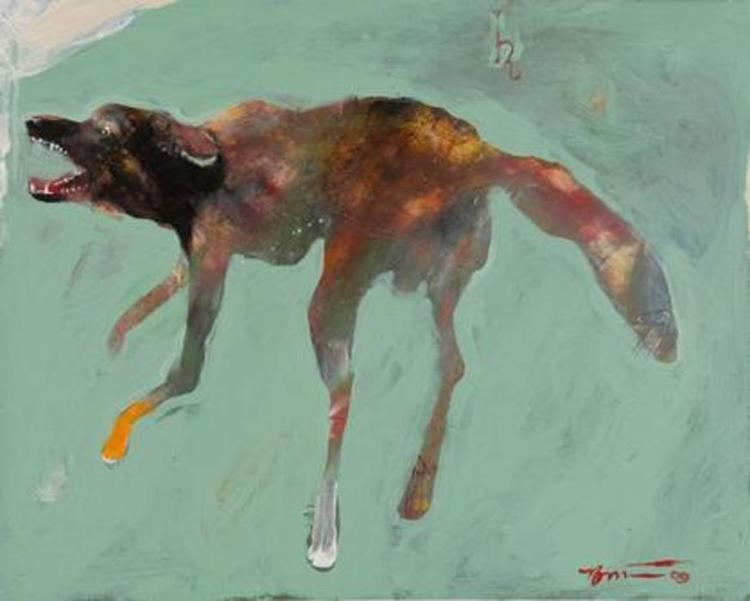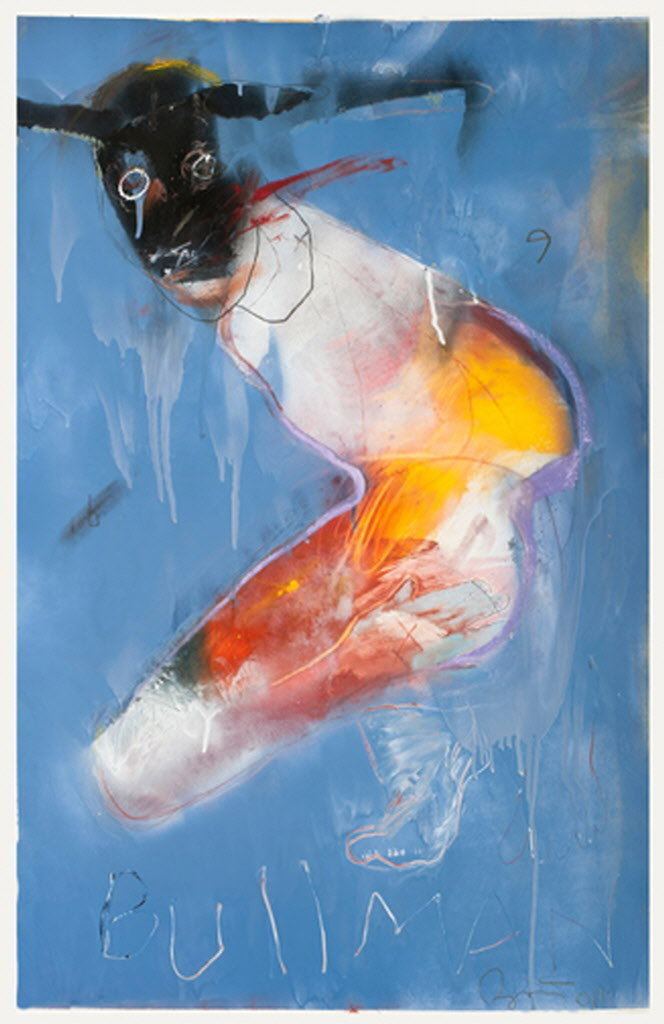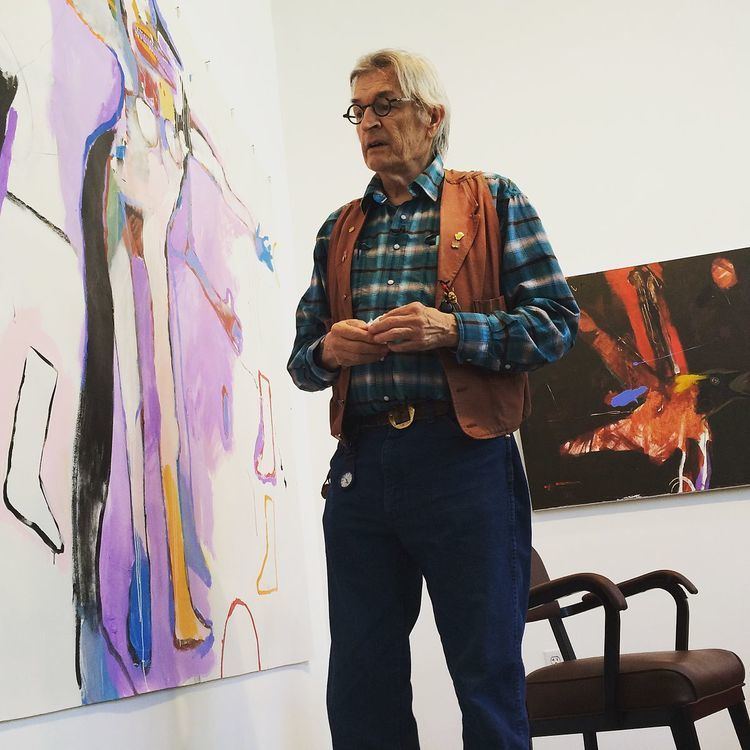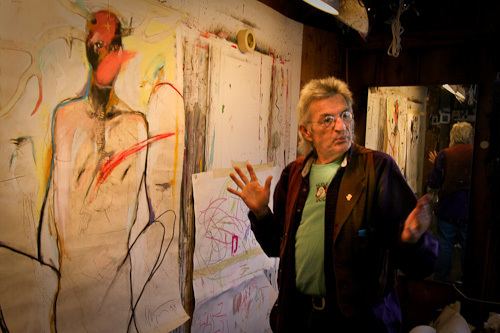Full Name Rick Bartow Role Artist | Name Rick Bartow | |
Known for Sculpture, Painting, Printmaking | ||
Richard Elmer "Rick" Bartow (December 1946 – April 2, 2016) was a Native American artist and a member of the Mad River Band of Wiyot Indians, a small tribe indigenous to Humboldt County, California. He primarily created pastel, graphite, and mixed media drawings, wood sculpture, acrylic paintings, drypoint etchings, monotypes, and a small number of ceramic works.
Contents
- First friday arttalk a conversation with rick bartow and charles froelick
- The Line and Legacy of Rick Bartow
- Early life
- Personal life
- Art career
- Death
- References

First friday arttalk a conversation with rick bartow and charles froelick
The Line and Legacy of Rick Bartow
Early life

Richard Elmer Bartow was born in Newport, Oregon in December 1946 to Mabel and Richard Bartow. His father's family was of Wiyot heritage. In Oregon, the family developed close ties with the local Siletz Indian community. When Rick was five, his father died. His non-Indian mother then married Andrew Mekemson, whom Bartow considered to be a beloved second father. He became interested in art at an early age, encouraged by his aunt Amy Bartow, who was studying art and art education at the University of Washington. His love for art continued through high school and extended to music when he took up the guitar and bongos.
Personal life

Bartow attended Western Oregon University and graduated in 1969 with a degree in secondary art education. In 1969, he was drafted into the army and sent to Vietnam. He served in the Vietnam war from 1969 to 1971 as a teletype operator and as a musician in a military hospital, for which he was awarded the Bronze Star.
Art career

After a number of small shows in the Newport area, Rick Bartow was offered a solo exhibition in 1985 by Portland, Oregon gallerist William Jamison of Jamison/Thomas Gallery, who operated galleries in Portland and New York City. Bartow exhibited frequently at both locations and elsewhere, and his work began to garner national attention. Following Jamison's death in 1995 and his galleries' subsequent closures, Bartow signed on with Charles Froelick of Froelick Gallery in Portland, and a fruitful twenty-year professional relationship and friendship followed. Froelick continues to represent Bartow's estate.

Bartow's work can be found in several museum collections including the Brooklyn Museum in Brooklyn, New York; the Peabody Essex Museum in Salem, Massachusetts; Eiteljorg Museum of American Indians and Western Art in Indianapolis, Indiana; the National Museum of the American Indian in Washington, DC; the Hallie Ford Museum of Art in Salem, Oregon; the Heard Museum in Phoenix, Arizona; the de Saisset Museum and the Portland Art Museum. In 2003 his works were exhibited at the George Gustav Heye Center, a branch of the National Museum of the American Indian in New York City.

His carving The Cedar Mill Pole was displayed in the Jacqueline Kennedy Garden at the White House in 1997; it had been designated one of the most highly regarded Native American public sculptures in the country. The pole was partially inspired by Bartow's work with the Māori artist John Bevan Ford. Presented as a gift to the Portland, Oregon metropolitan community from Oregon's Washington County and the Oregon College of Art and Craft, it was intended to help heal the controversy that surrounded an urban development project. The 26-foot-tall carving was created using one of the giant cedars that were removed for a road project.

Bartow's monumental cedar sculptures "We Were Always Here" were commissioned by the Smithsonian's National Museum of the American Indian, and sit on the Northwest corner of the museum overlooking the National Mall. Dedicated on the autumnal equinox, Friday, Sept. 21, 2012 at 5:30 p.m., the towering works represent a pinnacle of Bartow's accomplishments.
In April 2015 the Jordan Schnitzer Museum of Art at the University of Oregon opened "Things You Know but Cannot Explain", a major retrospective exhibition of Rick Bartow's works in many media, spanning 35 years of his career as an artist. On view at the Gilcrease Museum in the winter and spring of 2016, the exhibition is scheduled to travel to venues including the North Dakota Museum Of Art In Grand Forks, North Dakota, IAIA Museum of Contemporary Native Arts in Santa Fe, New Mexico; the Heard Museum, Phoenix, Arizona; Washington State University in Pullman, Washington; the Autry Museum in Los Angeles, California; and the High Desert Museum in Bend, Oregon in to 2019.
As influences, Bartow cited Marc Chagall, Francis Bacon, Odilon Redon and Horst Janssen, in addition to his Native American heritage and his work with the Māori. These artists also worked expressionistically with human and animal forms.
Bartow was also a musician and singer with his own band, Bartow and the Backseat Drivers. He played the guitar.
Death
Rick Bartow died on April 2, 2016 at the age of 69, of congestive heart failure.

